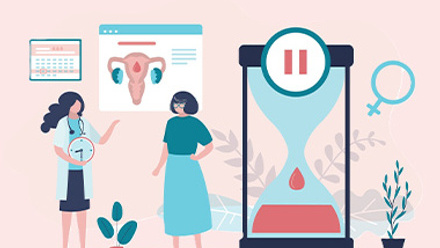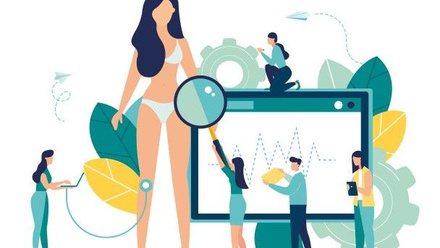Menopause: five top tips to support employees

What’s more, it’s often ridiculed, those ignorant of its effects even poking fun at some of the more common symptoms such as hot flushes. Whilst the provision of fans is a help it simply won't tick the box as the symptoms of menopause vary so much from one woman to the next, leading to reduced productivity, absence and, in worst case scenarios, can even lead to depression.
As changing workplace demographics ensure that more women are returning to work after having children and working until later in life, the proportion of the workforce that is likely to require support can only increase.
According to Business in the Community, as part of a toolkit it designed to help businesses support women going through the menopause, the average age for women to experience the menopause in the UK is 51, however it can typically occur between the ages of 45 and 58. 45% of the workforce over the age of 50 are women. This equates to almost 4.4 million women.
Certain medical conditions – such as cancer - can also bring about early menopause, as pointed out by Dr Julie Denning, partner at Working Towards Wellbeing, specialists in helping employees self-manage their health and wellbeing and one of Generali’s wellbeing investment matching partners.
“As the demographic of the workforce changes, employers are going to have to take into consideration the needs this population,” says Dr Denning. “Our experience of working with women who experience early menopause as a result of cancer treatments suggests that workplaces are able to make provision for the symptoms they experience.
“For example, flexible hours at work to manage symptoms of insomnia, considering positioning within the office to manage hot flushes – such as fans or proximity to a window or air conditioning - health coaching and/or cognitive behavioural therapy to help with concentration, feelings of anxiety or low self esteem.”
A question of responsibility
The fact is the menopause is a big issue for employers and those who want to properly manage the ageing, gender equal workforce of the future would be well advised to understand the health and wellbeing implications of the menopause.
If female employees are not supported properly there is a risk they can bring a claim for ‘sex discrimination’ under the Equality Act 2010. Recent unfair dismissal tribunal cases have found employers culpable of sex discrimination for failing to consider menopause symptoms in the same way as other medical conditions.
Such is the extent of the problem that the Government’s Equalities Office commissioned research to investigate the impact of the menopause transition on working women. The report, prepared by a team from the University of Leicester, reveals that ‘many women tend to feel that they need to cope alone’ – because of ‘a reluctance to speak up at work’.
Published in July 2017 by the Department for Education, The effects of menopause transition on women’s economic participation in the UK looked at how the symptoms of menopause transition, attitudes of workers experiencing the transition and attitudes of employers impact women’s economic participation. It attempts to quantify the economic cost and suggests ways in which female employees can be better supported.
Top 5 tips for employers
1) Accurate recording
Record any sickness absences that are related to the menopause as an ongoing health issue instead of a series of short-term absences. This will ensure your sickness absence procedure will not necessarily be implemented and will provide peace of mind to your employees when they discuss their health needs.
2) Line manager training
Ensure training for line managers to help raise awareness of how menopause symptoms may affect women in the workplace. This also helps with the implementation of flexible working policies, including allowing women to work from home after a poor night’s sleep or offering task rotation.
3) Adequate facilities
The physical working environment can worsen symptoms and increase stress at work so consider giving employees the means to adjust the temperature of their immediate work environment (ie a fan). Ensure that rest and / or toilet facilities are readily available as well as access to cold drinking water.
4) Communicate your EAP benefits
If you have an Employee Assistance Programme (EAP) in place – either on a standalone basis or as part of your group income protection policy – communicate regularly the vast array of services that female employees might find useful, such as telephone counselling, anxiety and depression screeners, online self-help programmes and mindfulness tools, body fat / BMI / heart rate calculators, and articles on health and wellbeing.
5) Promote exercise
Physical exercise is also key. It’s already proven that physical and mental health are intrinsically linked and involvement in physical activity can only help women during this difficult period in their lives. Promote physical activity, making full use of wellbeing apps that are offered as an added value benefit by some healthcare and group risk providers.
Colin Hawes is claims and medical underwriting manager – UK Employee Benefits, Generali.
This article was provided by Generali.
Supplied by REBA Associate Member, Generali Employee Benefits Network
Generali Employee Benefits' solutions are to protect and enhance the wellbeing of their workforce.







